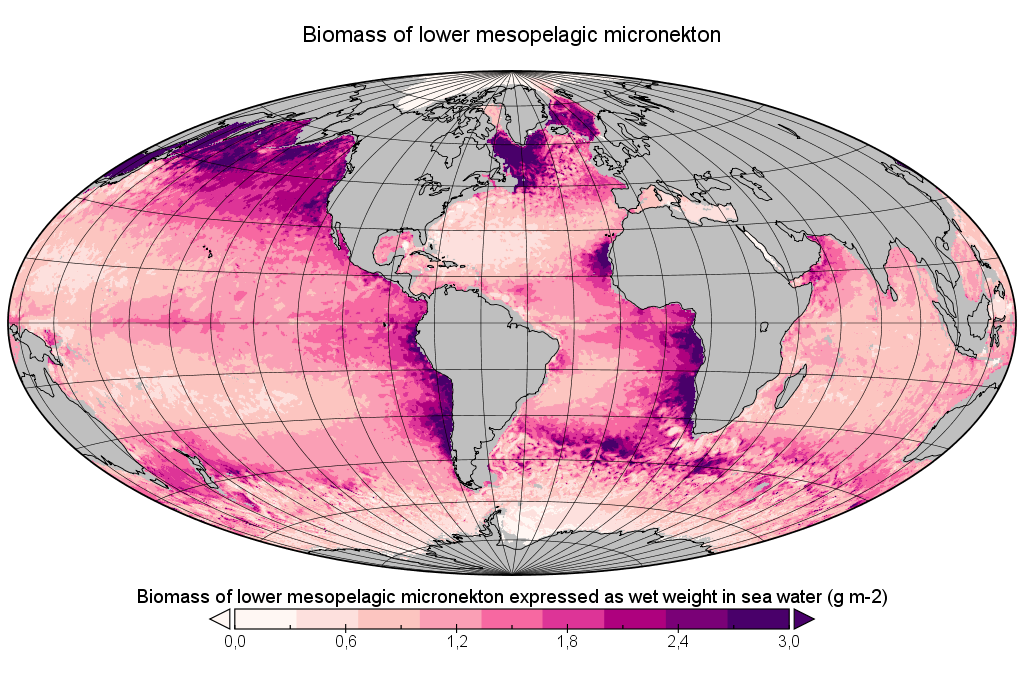Understanding the Ocean Food Chain: New Tool for Copernicus Marine Monitoring
- 24 July 2019
- Category: News

New Global Zooplankton and Micronekton Product for the EU’s Copernicus Marine Environment Monitoring Service
This month, our Marine Ecosystem Modeling team delivered a global zooplankton and micronekton model-based product as part of our work with Copernicus MEMS. Knowing the location and the biomass of these organisms, which are key parts of the ocean food chain, will improve sustainable fisheries management and climate science. This model is part of a larger, two-year contract with CMEMS.
What are Zooplankton and Micronekton?
They are small organisms at the low and mid-trophic levels of the ocean food chain. Zooplankton are small organisms (less than 1 to a few millimeters, e.g., copepods), which all fish larvae prey on. Micronekton are also relatively small, actively swimming organisms such as crustaceans, fish, and cephalopods that are typically about 1 to 10 centimeters. Micronekton are eaten by large fish and other oceanic predators. They are also predators of fish larvae. Therefore, zooplankton and micronekton distributions are key to helping us understand the behavior and population dynamics of larger oceanic predators that are either targeted by fisheries (mackerel, tuna, swordfish, etc.), strictly controlled in by-catch (e.g., bluefin tuna or sharks), or fully protected (marine turtles, seabirds, marine mammals).
The Marine Ecosystem Modeling Team
At CLS Fisheries, we have a dedicated team of scientists working on fish population dynamics and the ocean ecosystem. They develop models, forecasts, hindcasts, and stock assessments for scientists, fisheries advisors, and regional fisheries management organizations.
